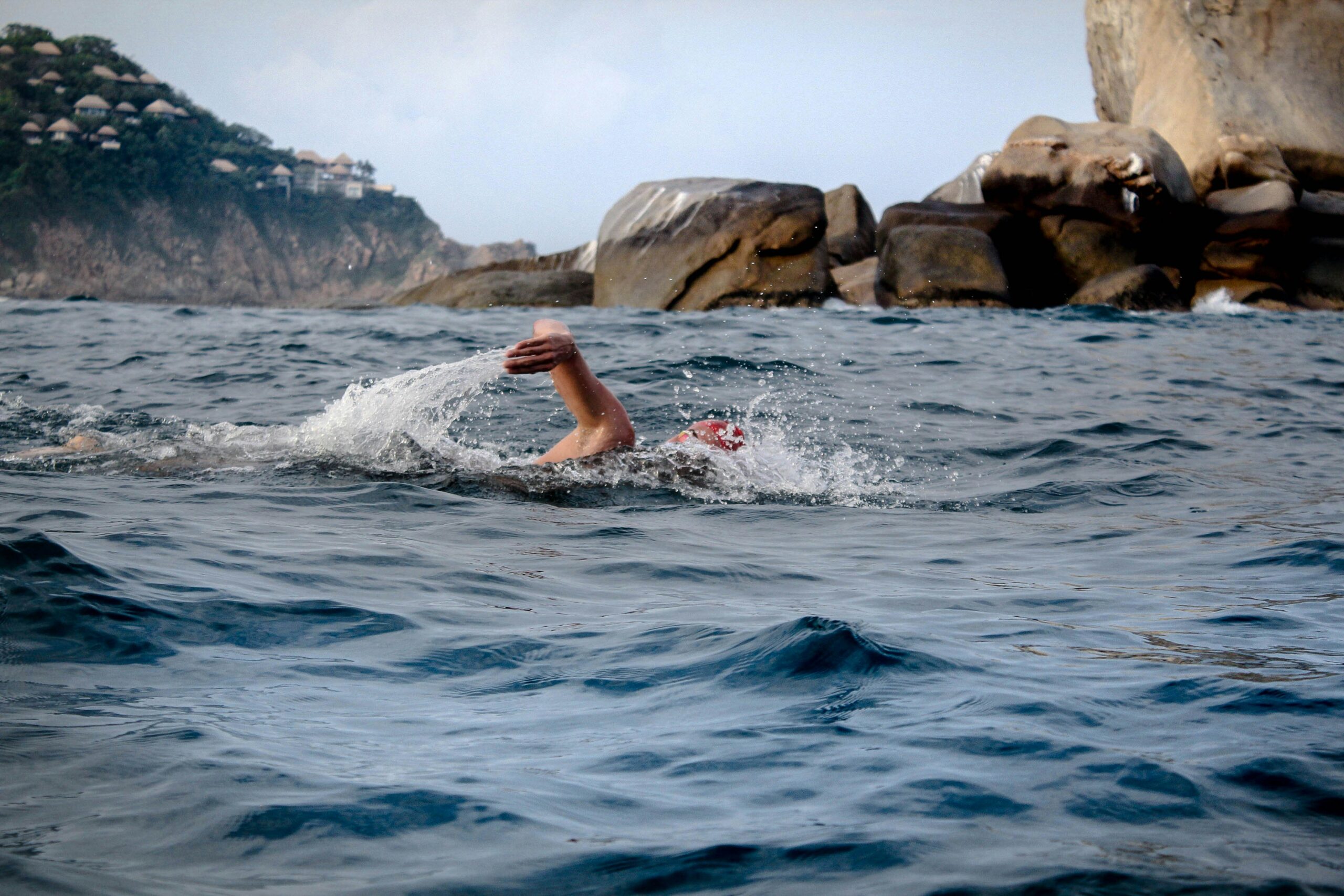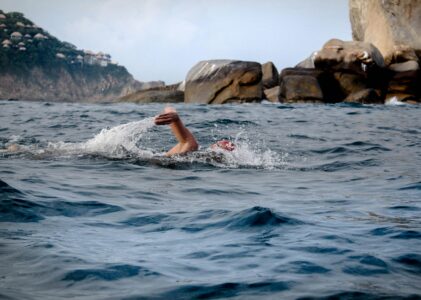In the world of swimming, the right gear can make all the difference in your performance and overall experience. While a swimsuit and cap are essential, one piece of equipment that often gets overlooked is Swim Goggles for Open Water Swimming. Most swimmers are familiar with the standard pool goggles, but when it comes to open water swimming, do you need a specific type of swim goggles? In this article, we’ll dive into the world of open water swimming and explore the importance of choosing the right swim goggles to enhance your experience and safety.
The Challenges of Open Water Swimming
Open water swimming is vastly different from swimming in a controlled pool environment. When you swim in a pool, the water is clear, temperature-controlled, and usually calm. In contrast, open water swimming takes place in natural bodies of water like lakes, rivers, and oceans, which present unique challenges:
Open water swimming is a thrilling and invigorating activity that allows you to connect with nature while testing your physical and mental endurance. However, it comes with a unique set of challenges that distinguish it from the more controlled environment of pool swimming. In this section, we will dive deeper into these challenges and how they impact open water swimmers.
1. Water Conditions
Perhaps the most significant challenge in open water swimming is dealing with the unpredictable nature of natural bodies of water. Unlike the calm and clear waters of a pool, open water can throw a variety of conditions your way:
- Waves: Depending on where you swim, you may encounter waves ranging from gentle swells to churning waters. Waves can alter your stroke, affect your breathing, and even disorient you.
- Currents: Rivers and oceans often have currents that can push you off course. Navigating against or with the current requires skill and endurance.
- Water Temperature: Open water temperatures can vary significantly. You might swim in chilly waters that require a wetsuit or face the challenge of overheating in warmer conditions.
- Water Clarity: Visibility in open water can be limited, especially in murky or brackish waters. Poor visibility can make it challenging to spot other swimmers, buoys, or potential hazards.
2. Sunlight and Glare
Open water swimming exposes you to direct sunlight, which can create several challenges:
- Glare: Sunlight reflecting off the water’s surface can create blinding glare. Without proper eye protection, glare can hinder your visibility and make it difficult to sight or navigate.
- Sunburn: Extended exposure to the sun can result in sunburn, even if you’re in the water. Sunscreen application and protective clothing are essential to prevent sunburn during open water swims.
- Sighting Difficulties: Sighting is the act of lifting your head to see where you’re going. In bright sunlight, it can be challenging to spot buoys, landmarks, or your intended course.
3. Navigation
In open water swimming, you often need to navigate without the assistance of lane lines and pool markings. This navigation challenge can lead to:
- Getting Off Course: Without clear visual references, swimmers can veer off course, adding extra distance to their swim or even getting lost.
- Buoys and Markers: Many open water swims involve courses defined by buoys or markers. Proper navigation is essential to round these markers accurately.
- Safety Concerns: Poor navigation can lead to swimmers unintentionally straying into dangerous areas or away from safety personnel.
4. Hazards
Open water can hide various hazards that are not present in a controlled pool environment:
- Rocks and Obstacles: Natural bodies of water may have hidden rocks, branches, or debris that can cause injury if not spotted and avoided.
- Marine Life: Depending on where you swim, you might encounter marine life, including jellyfish, sea urchins, or even larger creatures like sharks. Being aware of your surroundings is crucial.
- Boat Traffic: In popular open water swimming areas, boat traffic can pose a risk if swimmers are not visible to boaters or if swimmers inadvertently cross busy waterways.
5. Psychological Factors
Open water swimming can be mentally demanding:
- Isolation: In open water, you might feel isolated, especially during long swims. The vast expanse of water around you can lead to feelings of solitude, which some swimmers find daunting.
- Anxiety: Fear of the unknown, such as what might be lurking beneath the surface, can cause anxiety for some open water swimmers.
- Confidence: Building confidence in open water swimming takes time and experience. Many swimmers have to overcome fear and insecurity to fully enjoy the sport.
Given these challenges, it’s clear that choosing the right swim goggles for open water swimming is essential. Let’s explore the different factors you should consider.
Factors to Consider When Choosing Open Water Swim Goggles
1. Lens Type and Tint
The type of lens and its tint can greatly impact your visibility in open water. Consider the following options:
- Clear Lenses: These are suitable for overcast or low-light conditions but may not provide sufficient glare protection in bright sunlight.
- Mirrored Lenses: Mirrored goggles are excellent for reducing glare and reflections on the water’s surface, enhancing your vision on sunny days.
- Tinted Lenses: Tinted lenses come in various colors and are designed to enhance contrast in different lighting conditions. Amber or brown tints are often preferred for open water swimming as they improve visibility in various light settings.
2. Anti-Fog and UV Protection
Open water swimmers need goggles with anti-fog coatings to prevent fogging up, especially when transitioning from cooler air to warmer water temperatures. Additionally, look for goggles that offer UV protection to shield your eyes from harmful sun rays.
3. Peripheral Vision
In open water, you need a wide field of view to spot other swimmers, navigate buoys, and stay aware of your surroundings. Goggles with a broader peripheral vision range can be advantageous.
4. Comfort and Fit
Comfort is crucial for extended open water swims. Look for goggles with cushioned seals and adjustable straps to ensure a snug fit without causing discomfort or leaks. Some open water goggles also have a split strap design to distribute pressure evenly.
5. Durability
Open water conditions can be harsh on goggles, with exposure to saltwater, sand, and UV radiation. Opt for goggles made from durable materials that can withstand these elements.
Top Open Water Swim Goggles Recommendations
Now that we’ve discussed the factors to consider, let’s look at some of the top open water swim goggles available on the market:
1. Speedo Vanquisher 2.0 Mirrored Swim Goggles
- Lens Type: Mirrored
- Anti-Fog: Yes
- UV Protection: Yes
- Peripheral Vision: Good
- Comfort: Cushioned seals and adjustable straps
- Durability: Durable construction
2. TYR Special Ops 2.0 Polarized Goggles
- Lens Type: Polarized
- Anti-Fog: Yes
- UV Protection: Yes
- Peripheral Vision: Wide field of view
- Comfort: Soft silicone gaskets and adjustable nose bridge
- Durability: Resistant to chlorine and saltwater
3. Aqua Sphere Kayenne Swim Goggles
- Lens Type: Tinted
- Anti-Fog: Yes
- UV Protection: Yes
- Peripheral Vision: Excellent
- Comfort: Quick-fit buckle system for easy adjustment
- Durability: Scratch-resistant and durable
These are just a few examples of open water swim goggles that have received positive reviews from swimmers. However, it’s essential to try on goggles and find the pair that offers the best fit and comfort for your unique face shape and preferences.
Testing Your Goggles
Before embarking on a long open water swim, it’s crucial to test your goggles in the conditions you’ll be facing. Here are some tips:
- Adjust the Straps: Make sure the straps are snug but not too tight, as this can cause discomfort.
- Anti-Fog and UV Protection: Check that the anti-fog coating is working, and ensure the UV protection is adequate.
- Peripheral Vision: Test your goggles in a pool to get a feel for their peripheral vision capabilities.
- Comfort: Wear your goggles for an extended period to ensure they remain comfortable throughout your swim.
Real-World Experiences
To gain a deeper understanding of the importance of choosing the right swim goggles for open water swimming, let’s hear from some experienced open water swimmers.
Jessica’s Story
Jessica, an avid open water swimmer, shares her experience, “I used to use my regular pool goggles for open water swimming, and it was a struggle. The glare from the sun and the unpredictable water conditions made it challenging to enjoy my swims. After switching to polarized open water goggles, I can see clearly, even on the sunniest days. It’s made a world of difference in my confidence and performance.”
Mike’s Perspective
Mike, a triathlete who competes in open water events, says, “Peripheral vision is crucial for navigation during a race. I once tried goggles with a limited field of view, and I ended up veering off course several times. Since then, I’ve been using goggles specifically designed for open water, and they’ve improved my race times and overall experience.”
Additional Open Water Swimming Tips
Choosing the right swim goggles is just one aspect of successful open water swimming. Here are some additional tips to enhance your open water swimming experience:
- Practice Sight Buoy Turns: Buoy turns are common in open water races. Practice navigating around buoys to improve your swimming efficiency.
- Master Sighting: Learn to sight effectively by lifting your head slightly to see where you’re heading. This helps you swim in a straight line and stay on course.
- Stay Hydrated: In open water, it’s easy to become dehydrated due to the sun and physical exertion. Stay hydrated before and after your swim.
- Know the Water Temperature: Be aware of the water temperature and dress accordingly. Wetsuits can provide added warmth in colder waters.
- Safety First: Always swim with a buddy or in a group, and let someone know your swim route and estimated return time.
Swim Goggles for open water swimming
Open water swimming offers a unique and rewarding experience, but it comes with its own set of challenges. Choosing the right swim goggles specifically designed for open water can greatly enhance your visibility, comfort, and safety. Consider factors like lens type, anti-fog features, peripheral vision, comfort, and durability when making your selection. By investing in the right pair of goggles, you’ll be better equipped to tackle the open water and enjoy your swimming adventures to the fullest.

